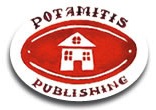 |
(spc.rs) - Basil the Great, Gregory the Theologian and John Chrysostom: During the eleventh century, disputes raged in Constantinople about which of the three hierarchs was the greatest. Some preferred St Basil (January 1), others honored St Gregory the Theologian (January 25), while a third group exalted St John Chrysostom (January 27 and November 13).
Dissension among Christians increased. Some called themselves Basilians, others referred to themselves as Gregorians, and others as Johnites.
Some argued for Saint Basil above the other two because he was able, as none other, to explain the mysteries of the Faith, and rose to angelic rank by his virtues. The partisans of Saint Chrysostom retorted that the illustrious Archbishop of Constantinople had been no less zealous than Saint Basil in combating vices, in bringing sinners to repentance and in raising up the whole people to the perfection of the Gospel. According to a third group, Saint Gregory the Theologian was to be preferred to the others by reason of the majesty, purity and profundity of his language. Possessing a sovereign mastery of all the wisdom and eloquence of ancient Greece, he had attained, they said to such a pitch in the contemplation of God that no one had been able to express the dogma of the Holy Trinity as perfectly as he.
And this mutual feast day was established in XI century during the reign of of the Emperor Alexius Comnenus (1081-1118).
By the will of God, the three hierarchs appeared to St. John the Bishop of Euchaita (June 14) one night in the year 1084 as a vision in his dream, and said that they were equal before God. "As you see, the three of us are with God and no discord or rivalry divides us.here is not among us a first, a second or a third, and if you invoke one of us the other two are immediately present with him."
They ordered that the disputes should stop, and that their common commemoration should be celebrated on a single day. Bishop John chose January 30 for their joint Feast, thus ending the controversy and restoring peace.
This feast day the Greek people consider not only as the church but also its greatest national and school holiday.































